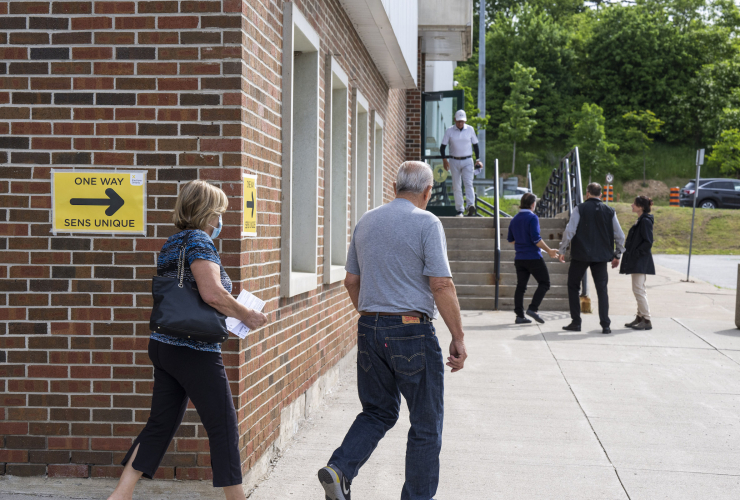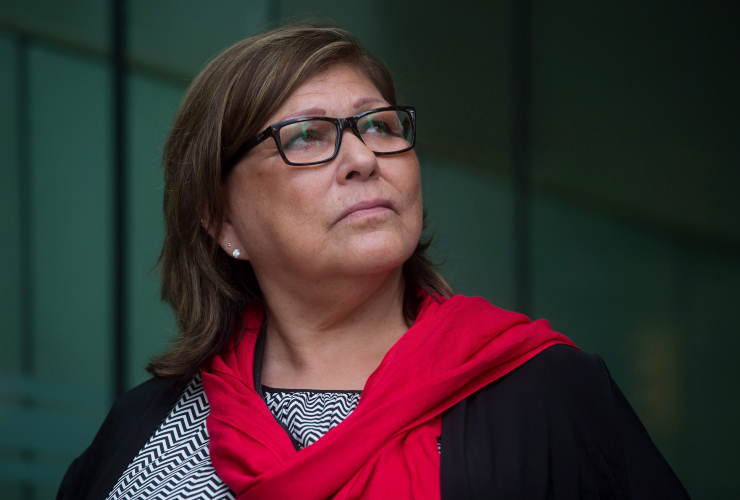Canada's first federal carbon offset market kicked off Wednesday as the final piece of the puzzle in the carbon price for big industry takes shape.
But the arrival of the new offset system was greeted without applause by climate activists who say it simply makes it cheaper for big industry to keep polluting.
Carbon offset markets allow governments, companies and other organizations that emit greenhouse gases to pay for those emissions through the purchase of credits created when emissions are cut somewhere else.
Voluntary markets have existed for years, as private companies raised capital for emissions-reducing projects like wind farms and tree planting, by selling credits to people looking to pay for their own carbon footprint.
Compliance markets are newer and allow entities that pay a carbon price to lower the amount of emissions they must cover by buying credits from a regulated market. The credits are almost always less than the carbon price — on average about 10 to 20 per cent less in compliance markets that already exist.
British Columbia, Quebec and Alberta have some compliance credit systems already but there was not one at the national level until now.
Environment Minister Steven Guilbeault said Wednesday the new federal system is a key piece of Canada's ability to hit both its emissions target for 2030 and getting to net zero emissions by 2050.
"Climate change is the crisis that will persist," he said. "That's why we cannot pause and we must continue to go faster and further."
The new system targets the big industrial emitters that pay the federal carbon price, but any entity in Canada can buy offset credits from the system. The companies in the federal carbon pricing system can only use credits for about 75 per cent of their covered emissions.
For now, only municipalities that install new methane capture systems at landfills will be part of the new compliance market. Over the next year, the government intends to finish the rules to add projects that cut emissions from refrigeration systems, forests and soil management on farms.
The government said it is also now starting to write the rules to add direct air capture technology that pulls carbon dioxide out of the air and traps it underground.
One credit will be created for every tonne of emissions reduced by approved projects. They will only count after being audited to ensure those cuts are not being made to comply with existing regulations or carbon pricing. The cuts also have to be permanent and they will be tracked on a public register.
Louise Comeau, director of climate change and energy solutions at the Conservation Council of New Brunswick, said big industry in Canada is already being asked to do very little about their own emissions.
Big emitters covered by the federal carbon price pay that cost — currently $50 a tonne — on only five to 20 per cent of total greenhouse gases produced.
Comeau said cutting the cost by allowing emitters to buy credits for less than the price of the carbon price simply lowers their financial incentive to cut their own emissions.
"The whole thing is ridiculous," said Comeau.
Not to mention, she said, the emissions being cut at landfills and farms and from forests, should be cut in addition to the cuts needed from big industry. It's not an either-or situation, she said.
Shane Moffatt, head of the nature and food campaign at Greenpeace Canada, called it a "massive step back."
"This doesn't get us anywhere," he said. "The carbon market is a shell game."
This report by The Canadian Press was first published June 8, 2022.
"The new system targets the
"The new system targets the big industrial emitters that pay the federal carbon price, but any entity in Canada can buy offset credits from the system."
The federal carbon price applies now only to a minority of small provinces. The carbon costs under the federal program are marginal. Provincial programs for large industrial emitters are even less stringent.
In Canada, the carbon pricing regime for large industrial emitters is already a joke. Adding a dubious carbon offset market to the scheme just makes it worse.
"There's a patchwork of OBPS policies across the country, and some provinces have implemented 'weak' or 'non-existent' systems that have let many big polluters off the hook."
"Federal watchdog warns Canada's 2030 emissions target may not be achievable" (CBC, Apr 26, 2022)
https://www.cbc.ca/news/politics/environment-commissioner-emissions-redu...
The federal carbon price for large industrial emitters applies now only to Manitoba, Saskatchewan (partial), Prince Edward Island, Yukon and Nunavut. Together, this accounts for a small fraction of emissions from Canada's large industrial emitters.
Canada's federal and provincial govts shield large emitters from significant carbon costs so they can remain competitive in global markets.
"Biggest industrial emitters don't pay fair share for pollution, critics say" (April 14th 2022)
https://www.nationalobserver.com/2022/04/14/news/biggest-industrial-emit...
"Canada's biggest emitters are paying the lowest carbon tax rate" (January 17, 2022)
https://www.corporateknights.com/climate-and-carbon/canadas-biggest-emit...
The federal Output-Based
The federal Output-Based Pricing System (OBPS) for large industrial emitters does not apply to large emitters in Alberta. The province has its own far less rigorous industrial pricing regime (TIER) that supposedly meets the federal standard.
O&G companies pay pennies on the dollar in carbon costs. Federal and provincial carbon pricing systems do not impair their profits — or reduce their emissions.
Under Alberta's Technology Innovation and Emissions Reduction Regulation (TIER), large industrial emitters pay a small fraction of federal rates. TIER dollars are effectively recycled back to industry to fund carbon capture technology and research. (Projects industry should pay for in the first place.)
Worse, for the last three years, the AB govt reduced the payments due from the most-carbon intensive oilsands emitters. The AB Govt reduces payments from the worst offenders.
The AB govt also increased the facilities' allowable emissions. Circumventing its own emissions reduction program while boosting profits for industry.
"Top-emitting Alberta oilsands site got government relief from pollution payments, Reuters reports" (CBC, Dec 08, 2021)
"Alberta lowered CNRL's costs for Peace River site to comply with provincial emissions requirements: Reuters"
https://www.cbc.ca/news/canada/calgary/top-emitting-canada-oilsands-site...




Comments